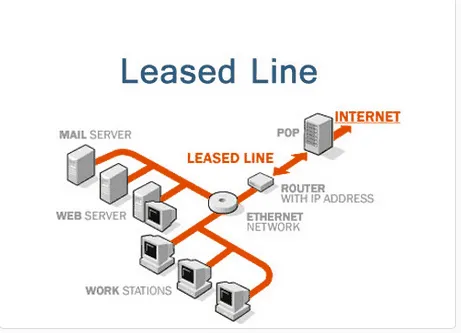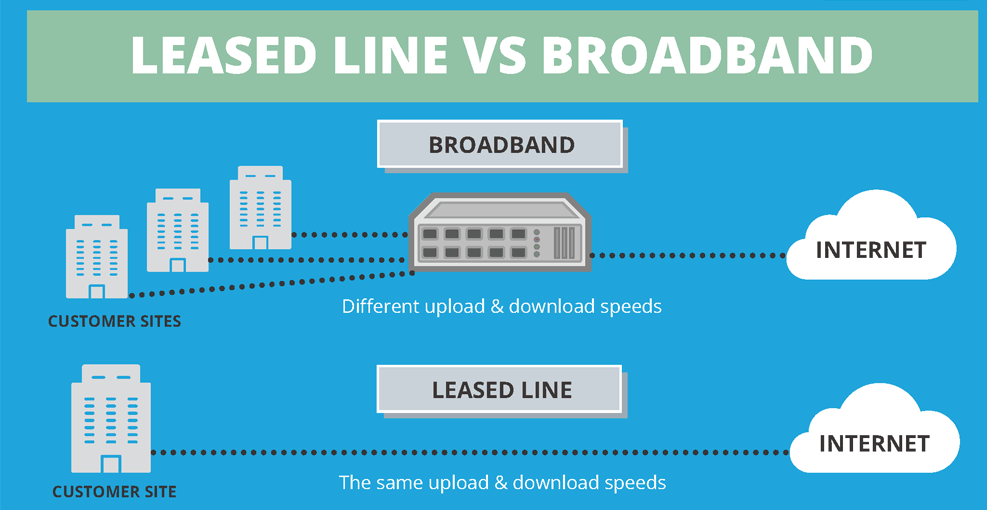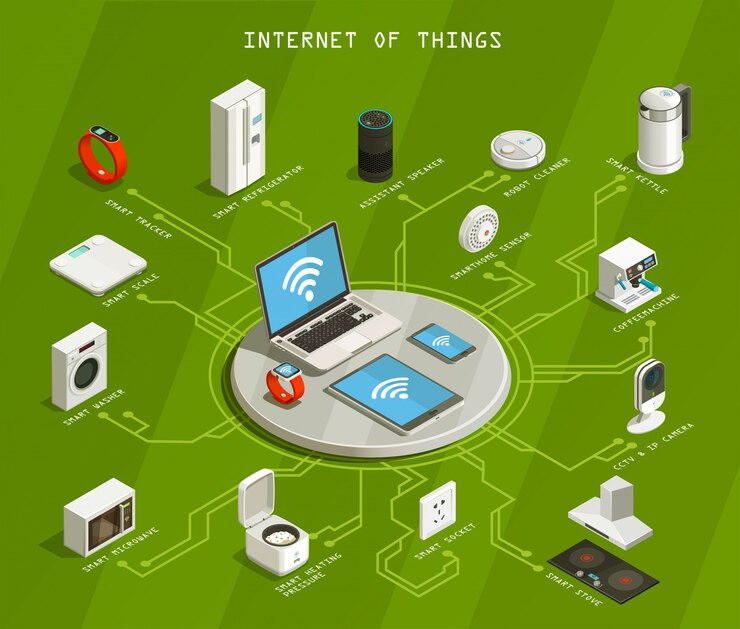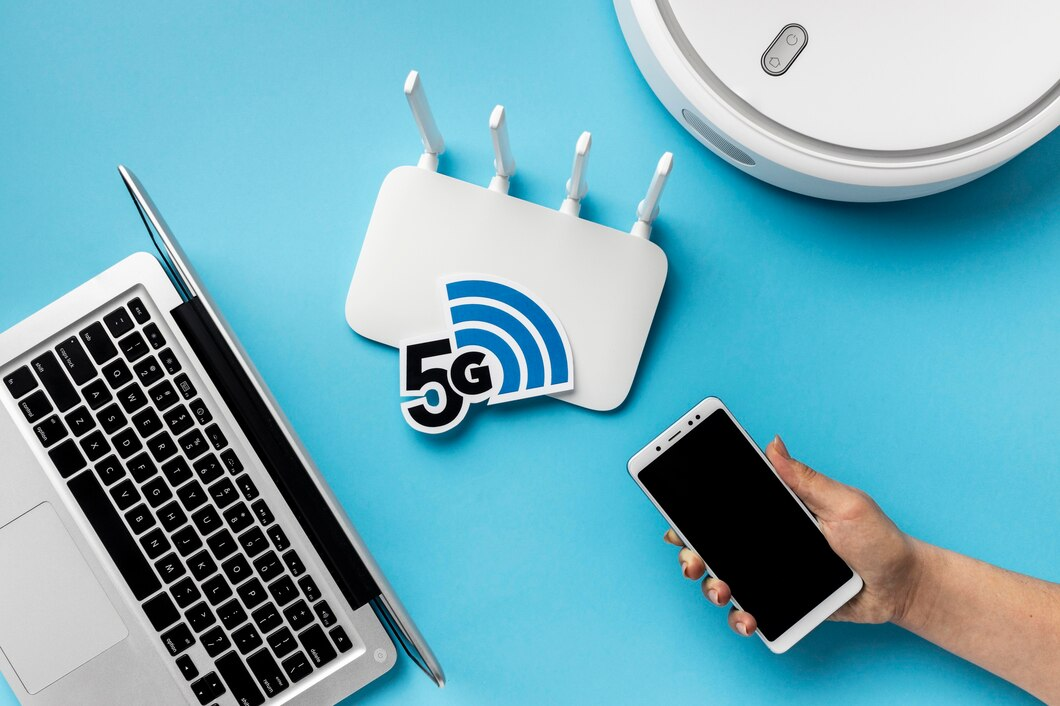All You Need to Know about Leased Line
-
May 12, 2022
-
6 min read

A majority of businesses and organisations today rely on internet networks and applications for communication and collaboration. You need outstanding business relationships to succeed in the short and long term.
Investing in internet applications for reliable communications is key, as they accelerate collaboration and communication. Without the internet, business associations might not be as productive. According to a WiredScore report, 75% of firms blame an unstable internet connection for their loss of revenue.
What is a leased line?
A leased line is a dedicated data connection with a fixed bandwidth. It enables small, medium, and large businesses to connect to the internet in a secure, reliable, and highly efficient manner, with maximum download capacity, resilience, and uptime.
Characteristics of Leased Lines
- Symmetrical: Leased lines are symmetrical so that download and upload speeds are equal.
- Uncontended: Leased line connections are uncontended, implying that they cannot be shared with others.
- Point to point: They connect two points – ISP and business location.
Leased Line Architecture
Leased lines are connected directly with the premises or can also be done through a fibre optic cable. In the case of a fiber optic leased line, it works by sending pulses of light. The transmitted data travels at the speed of light.

Image source: Network encyclopedia
Types of leased lines
- Fibre leased lines: This includes a process of sending light from fibre leased lines to fibre optic cables to establish a symmetric data connection. Only a few leased lines use fibre cables for the entire routing, whereas most leased lines use fibre cables for the majority of the portion. The fibre leased lines offer great speed compared to the other types.
- DSL leased lines: A Digital Subscriber Line (DSL) provides low-bandwidth leased lines. In comparison to leased lines, which are symmetric and non-contended, DSL connections are asymmetric and contended. You can choose SDSL, an asymmetric alternative to DSL that provides faster upload speed.
- MPLS leased lines: Multi-protocol label switching (MPLS) is a technology for encapsulating data and transferring it from X to Y. You can stick labels on it and then decide on transfers depending on those labels.
Leased line options
The leased line options available are Fibre Ethernet or Ethernet Access Direct, Ethernet in the First Mile, and Ethernet over Fibre to the Cabinet (FTTC).
How does a Leased Line work?
A leased line is an allocated circuit between two points of communication. It is always switched on and rented for a monthly charge or according to the service provider’s terms. Leased lines are exclusive, allocated, and dedicated. This means that the associated bandwidth is exclusive for personal and business use.
They are different from traditional telecommunications technologies, which use and reuse the circuit by switching. They establish a continuous tunnel between the two communication points, allowing data to flow continuously.
How to set up a leased line?
Before getting a leased line, consider the factors such as the number of users, intensity of usage, and cost. Also evaluate the pros and cons, such as upload and download speed, reliability, cost, and installation time before setting up. Follow up with a contingency plan, understand the circuit’s requirements for visibility and, finally, choose the location for the circuit to be installed.
How fast is a leased line?
Leased lines often have speeds ranging from 1 Mbps to 10 Gbps. The average speed of a leased line is 2Mbps. However, 10 Mbps and 100 Mbps are becoming more prevalent currently.
How to check the speed of a leased line?
Following are steps for the most convenient and simple method of checking the speed of your leased line:
- Plug your system directly into the router that your leased line service provider has given you.
- Go to a speed testing tool website. For example, https://www.airtel.in/speedtest/
- Click ‘Start’.
Why are leased lines expensive?
Leased lines are more expensive than other connection services like ADSL or SDSL, as they are exclusively dedicated to the leaseholder.
Difference between a leased line and broadband
| Leased Line | Broadband |
| Downloads and uploads have identical speeds. | Download speed is more than upload speed |
| Speeds are extremely high in this setup | Speeds are moderate in this, especially as compared to Leased line |
| The connection here is dedicated, does not cause interruptions | Bandwidth is shared between several people |
Source: Pure cloud solutions
Uses of leased lines
Small and large enterprises are employing leased lines for several reasons, some of them being:
- including Internet access
- connecting systems
- servers from several locations
- making phone calls
Apart from that, They also use it to enable remote access to employees, transfer data and control Internet traffic in a network, and for multimedia streaming.
Different applications of leased lines
The applications of leased lines are site-to-site data connectivity, site-to-network connectivity, and site-to-site PBX (private branch exchange) connectivity.
Advantages of a leased line
The major advantages of the leased line include :
- dedicated bandwidth
- symmetric lines,
- exceptional speed
- low latency
- Reliability
Leased lines come with an SLA for performance monitoring and troubleshooting.
Disadvantages of a leased line
- Connectivity cost
- Installation cost
- Installation time
What should you check with a leased line service provider?
Below are the few checks you must perform while choosing a leased line provider:
- Will they assist in setting up the leased line?
- How resilient will the service be?
- Will they support you and provide customer assistance when required?
- How will you handle backup service?
- The provider’s level of visibility on the circuit
Summary:
One most popular option when you think of a high-speed Internet connection is leased lines. A leased line is an allocated circuit between two points of communication. The leased lines are used by corporate offices, businesses, companies, internet cafes, and so on. Basically, leased lines are used in all places that require an uninterrupted Internet connection for collaboration and communication activities.
Boost your business growth with dedicated internet solutions for reliable and high-speed connectivity.
 Share
Share










